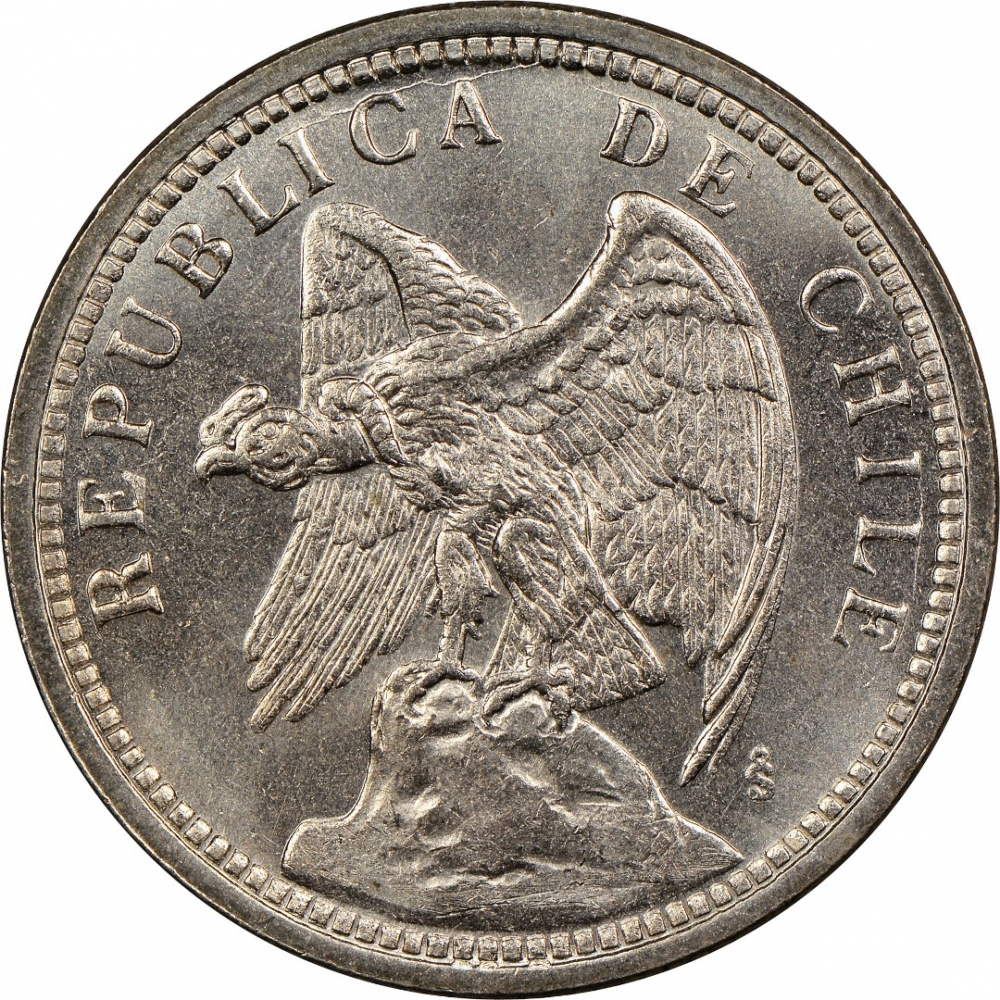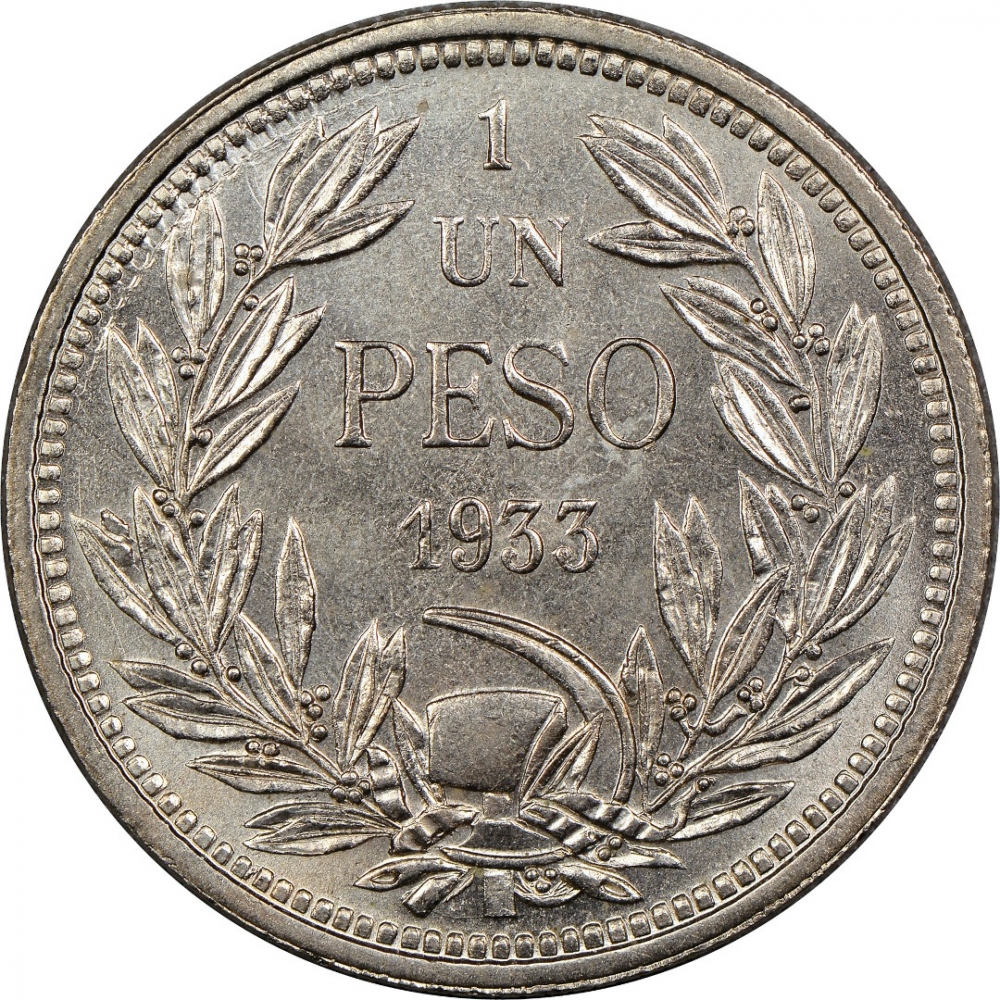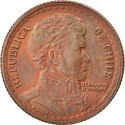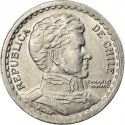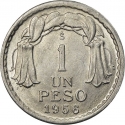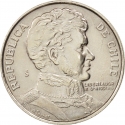You are about to finish your registration. Please check your mailbox (including spam folder). There should be a letter with a confirmation link. Check setting to make sure that your e-mail address is correct.
Send letter again
Obverse

|
Andean condor on rock left. REPUBLICA DE CHILE |
|---|---|
Reverse

|
Denomination above date within a wreath of 2 olive branches and with hammer and sickle (☭) as a knot. 1 |
| Edge |
Characteristics
| Material | Cupronickel |
| Weight | 10 g |
| Diameter | 29 mm |
| Thickness | 1.88 mm |
| Shape |
|
| Alignment | Coin |
| Alt # |
|
| Mint |
Casa de Moneda de Chile (So)
|
